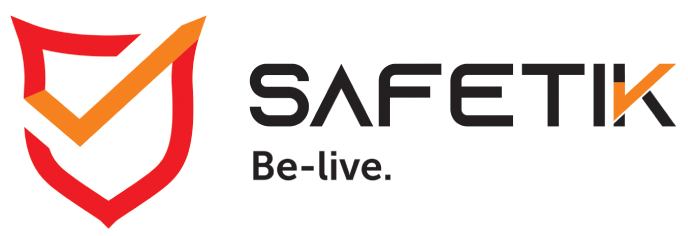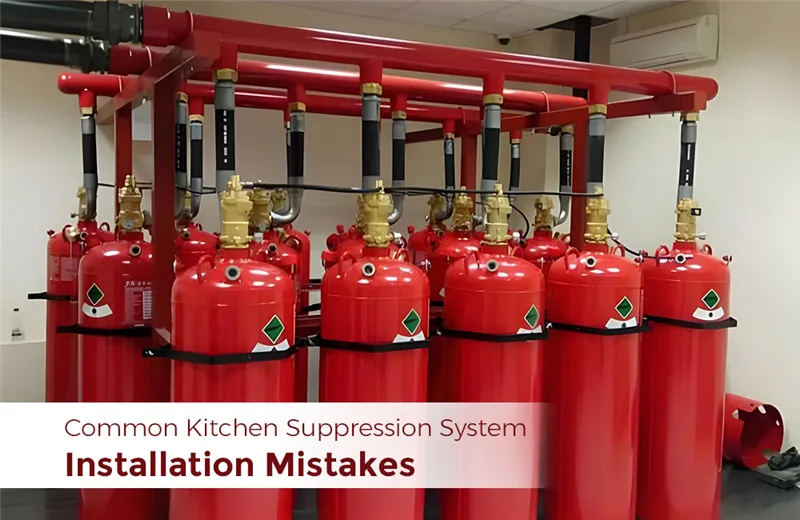Imagine you are being cooked in a commercial kitchen where food is supposed to be cooked! This happens if a fire accident occurs in a kitchen that lacks a fire suppression system. These systems suppress fire and contain the fire source to prevent fire spreading.
Proper installation is important because a poorly installed system can fail in an emergency. Most of the cases, installations go wrong due to avoidable mistakes. The blog will discuss common mistakes and how to prevent them.
Not following the manufacturer guidelines
Every kitchen suppression system installation comes with specific instructions based on its components and performance standards. Ignoring these guidelines can lead to poor performance or even system failure in an emergency. Different brands or models have unique installation requirements such as nozzle placement, piping configurations, clearance specifications etc. Avoiding these details can compromise the system’s ability to detect and extinguish fires.
Tip: Always refer to the official installation manual and hire certified professionals who follow the instructions without fail.
Incorrect nozzle placement
Incorrect nozzle placement is one of the fire suppression system mistakes. The nozzles are made for high-risk items like stoves, fryers, and grills. These are areas where fires are most likely to start. The system won’t discharge extinguishing agents unless they have been positioned correctly.
For example, if a nozzle isn’t directly above a deep fryer, it may fail to suppress a spreading grease fire, putting you at serious risk.
Tip: Always have a professional layout and hazard analysis done before installation to ensure each nozzle is correctly placed for maximum coverage and protection.
Using incompatible equipment
Mixing and matching components from different suppression system brands may result in fire suppression system installation issues. It may be convenient or cost-effective, but it’s a serious mistake. Suppression systems are made to work as a complete, integrated unit. Using parts from another brand can disrupt how the system detects fires or releases agents.
Incompatible components may not trigger properly during an emergency, leaving your kitchen unprotected. Using unauthorized parts can void warranties, violate fire codes, and lead to insurance claim denials in the event of a fire.
Tip: Always use manufacturer-approved parts and avoid substituting components from different systems.
Poor maintenance after installation
Kitchen suppression system installation is just the first step. Regular maintenance is what keeps it working. Unfortunately, many of you may fail to conduct inspections and test the systems or ignore cleaning tasks like clearing grease build-up from the nozzles.
Poorly maintained systems can have blocked discharge lines, faulty sensors, or expired chemical agents. These make the systems useless in emergency. This is applicable in the case of fire extinguishers too. You should learn how to use a kitchen fire extinguisher and maintain it properly.
Tip: Set a maintenance schedule and follow it regularly. Keep detailed records of all checks and services.
Ignoring local fire codes and regulations
Every city, state, or region has its own fire safety regulations. Kitchen suppression system design, installation, and maintenance also come under these regulations. These local codes ensure systems perform correctly and provide maximum safety in a commercial kitchen environment.
Ignoring or misunderstanding these regulations can lead to serious consequences. These consequences include heavy fines, forced shutdowns and complete reinstallation of systems. For example, a system that meets national standards might still be non-compliant in your local jurisdiction. This comes under fire suppression system installation issues due to differences in vent hood spacing, appliance coverage, or inspection frequency.
Tip: Always work with licensed, local professionals who are familiar with the latest fire codes and understand what’s required in your area.
Inadequate training for kitchen staff
Even the best kitchen suppression system can fall short if your staff don’t know how to respond when it activates. Inadequate training for kitchen staff also comes under fire suppression system mistakes. Kitchen staff should be trained on how the system works, what happens during activation, and what their role is in that moment. Without training, staff may panic and feel confused about what to do at the time of an emergency. They should know how to evacuate, shut off appliances, and when it’s safe to re-enter the kitchen.
Tip: Conduct training sessions every month. Include fire drills, explain system components, and walk staff through step-by-step response protocols.
Kitchen fire suppression systems are important to ensure safety in commercial kitchens. But their effectiveness depends entirely on proper installation, regular maintenance, and trained staff. Common kitchen suppression system installation mistakes are discussed in the blog and are avoidable with the right knowledge and professional support. You can ensure your system performs when it matters most by following manufacturer guidelines, complying with local fire codes, and working with certified experts.
Safetik is a leading fire fighting company in Kerala, offering the best fire and safety services. With more than 20 years’ experience, we deliver fire safety solutions across industries. Contact us to ensure the safety of your people and property.

